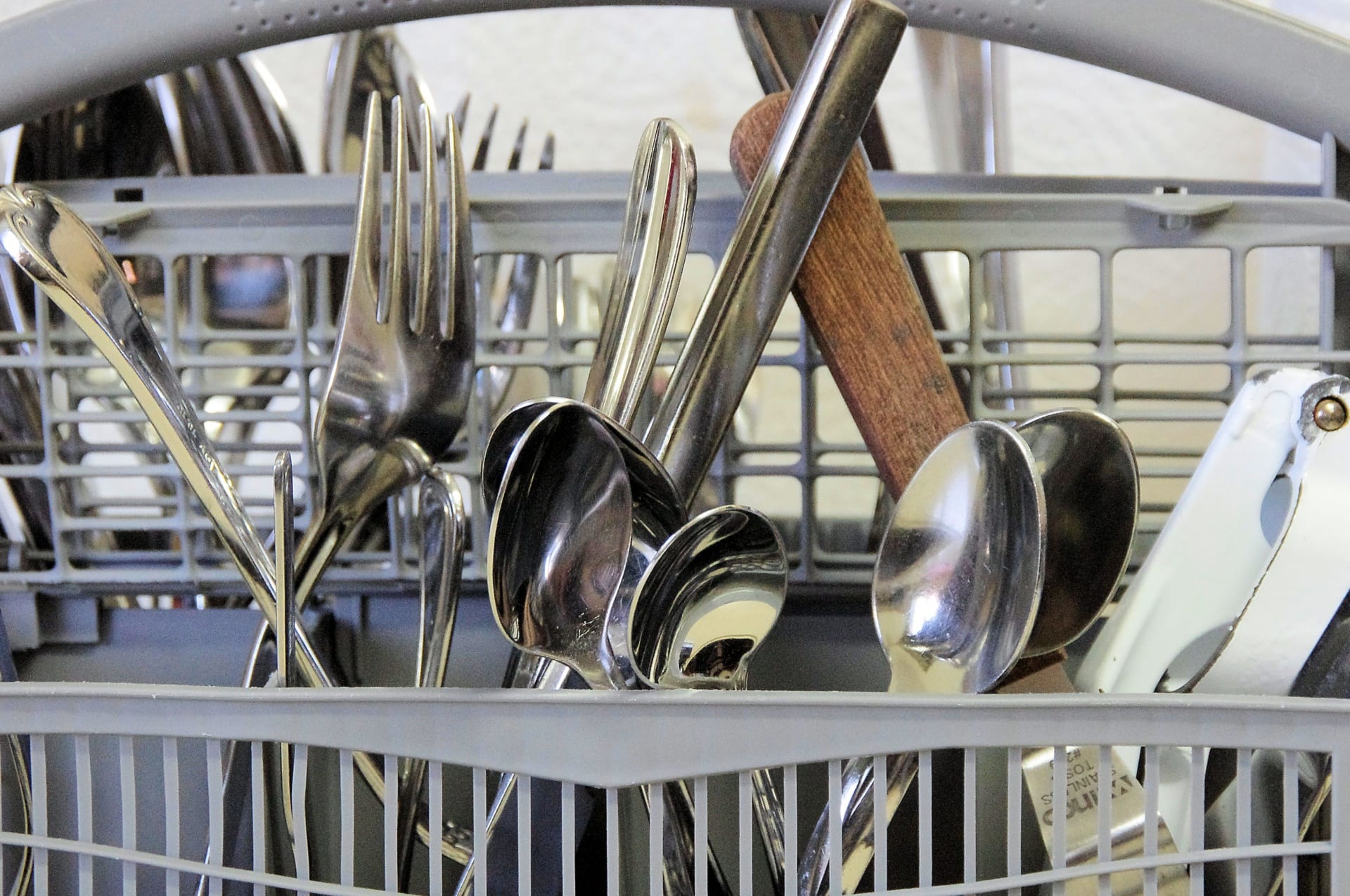Trending Now
Nine out of ten marriages end because SOMEONE feels the need to unload and reload the dishwasher after I’ve loaded it.
I exaggerate only because I’m defensive.
The fact is, fights between couples over loading the dishwasher the correct way are fairly common.

Photo Credit: Pixnio
As someone who is unfairly accused of being a dishwasher loading dud, I’ve found an expert guide on how to do this stupid chore the right way.
It turns out everyone’s wrong. Even you. So read this, get on the same page with your honey, load the dishes, then you can both go see a movie.
First, cups and small bowls should be placed on the top rack upside down. Lean them if water tends to collect on the bottoms.

Photo Credit: Pxhere
Chef and blogger at Home Kitchen Land, Heloise Blaure, says, “All plastic items should go on the top rack, too, because the heat comes from the bottom and can warp plastics.” Large utensils like spatulas and ladles should lie flat on the top rack to get properly cleaned as well.
The bottom rack gets all the plates, large bowls, pots and pans, with the biggest pieces along the sides.
Spoons and forks go in the utensil holder handle end down. Knives go in blade down (but it’s much better to hand-wash kitchen knives).

Photo Credit: PublicDomainPictures.net
That’s all sort of common sense, but there are also important ways to load dishes that do prevent everything from getting properly cleaned.
Avoid overloading. According to Whirlpool, anything nesting will not get clean.
Do not put large flat items against the door. Baking sheets and platters should be in the rack so that detergent can get out of the door and reach the rest of the washer.

Photo Credit: Flickr
Don’t lay pans face down on the bottom rack if your machine doesn’t have an upper spray arm. Items placed like this and not on their side in the rack blocks water from getting up top.
Before closing the door and starting the dishwasher, give the upper rack spray arm a spin to see if it hits anything. Rearrange your items until the arm spins freely.
Also – and this is key – water comes from the center of the sprayer, so point your dirty dishes toward the center instead of placing them all facing the same way.

Photo Credit: Flickr
Melissa Maker, host of the YouTube channel Clean My Space, says to go ahead and remove bits of food from your dishes before loading, since etoo much food waste can sit in your washer and mold. But don’t go crazy on pre-rinsing. That just wastes water.
Don’t use your dishwasher to clean cast iron pans, non-stick pans, fine china, metal finishes, wood utensils and cutting boards, or your cooking knives. All the water running through the machine will ruin these items. Also, check other items for labels that show they are hand wash only.
To keep your dishwasher running properly, keep it clean by checking for left-over food bits and by running a cycle with vinegar once a month.

Photo Credit: Pixabay
Pre-heat the water by running your hot water faucet so your washer doesn’t start with cold. And you can save energy by not using the heated dryer cycle.
This isn’t just a guide for cleaner dishes, folks. This is a guide for happier, healthier marriages.
Also good for roommate and parenting situations.






